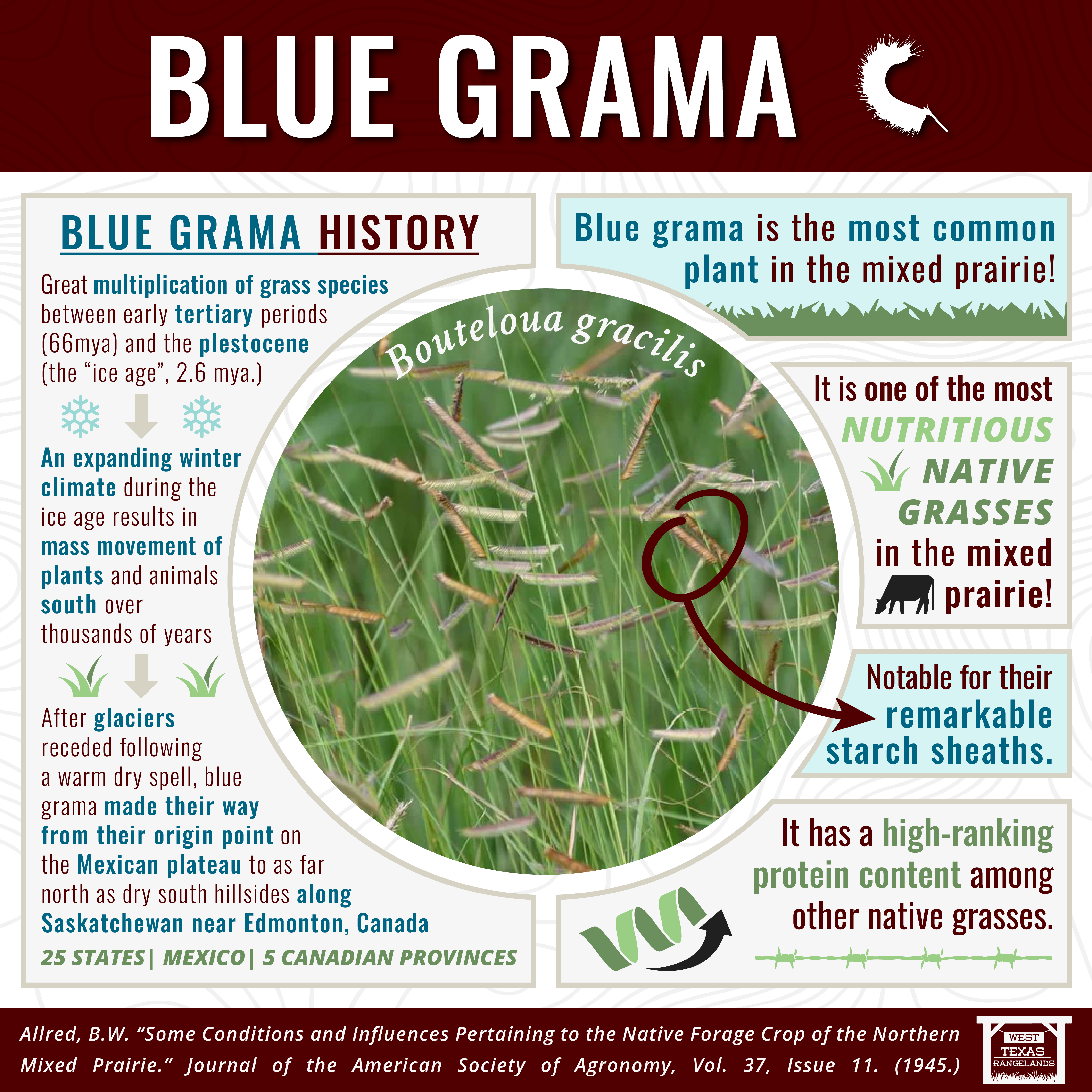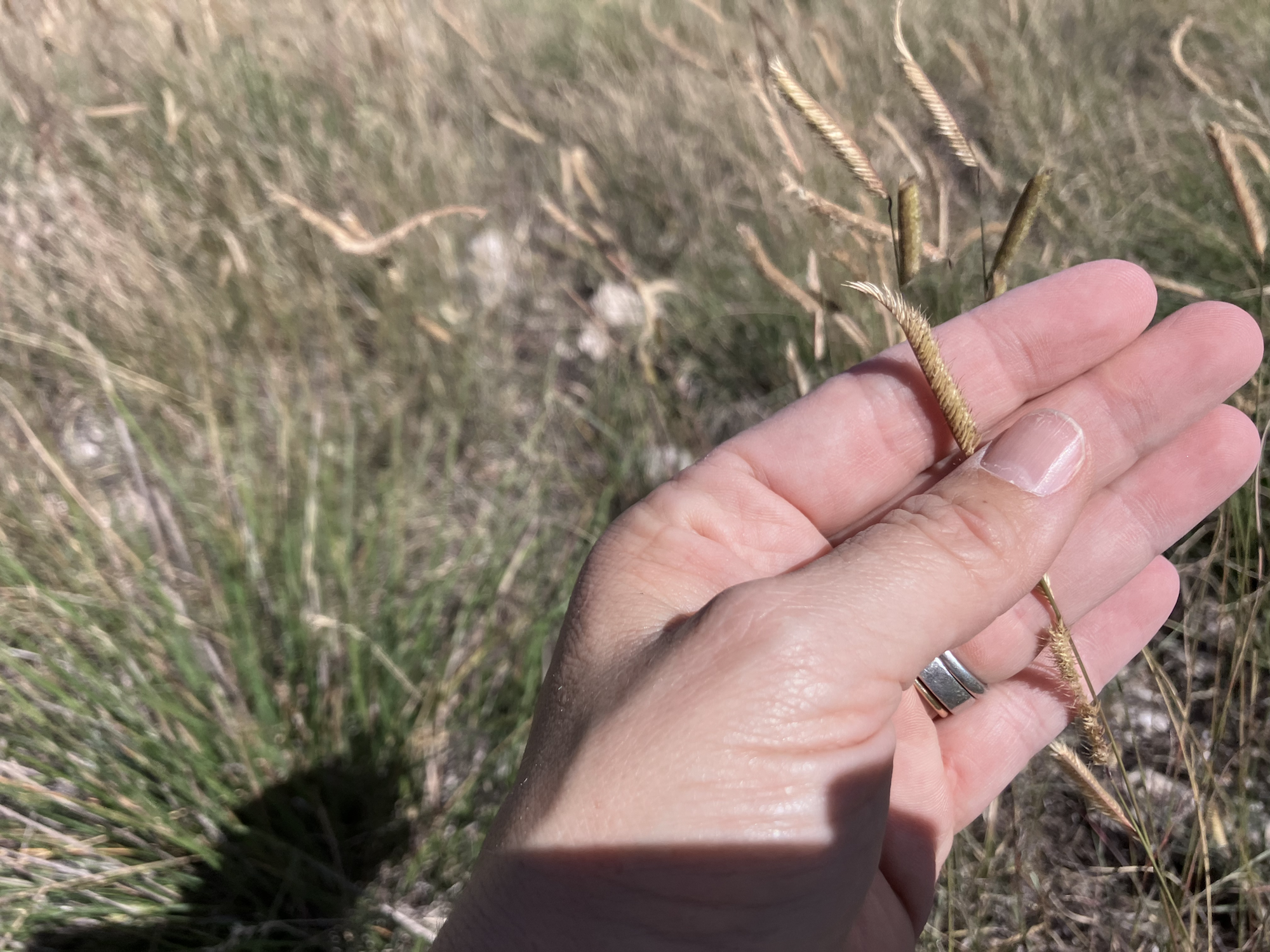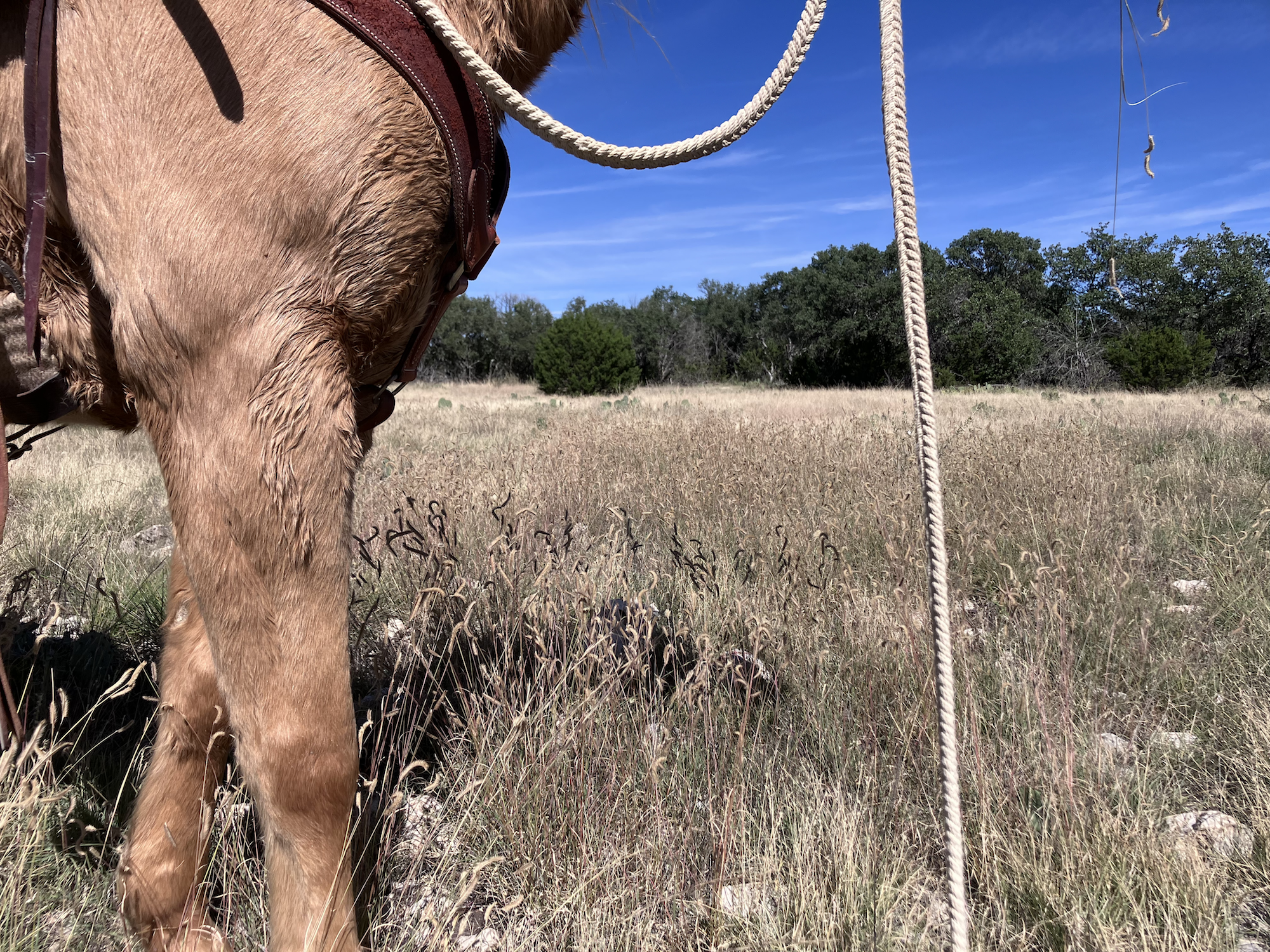 As stewards, let’s all just take a Christmas moment reflection and a deep breath of blue grama. Did you know that blue grama is the most common plant found throughout the mixed prairie? Even more impressively, blue grama possesses the most general distribution thriving as far north as Canada and as far south as Mexico.
As stewards, let’s all just take a Christmas moment reflection and a deep breath of blue grama. Did you know that blue grama is the most common plant found throughout the mixed prairie? Even more impressively, blue grama possesses the most general distribution thriving as far north as Canada and as far south as Mexico.
It takes more than just quantity, but quality too! And blue grama, hairy grama, and buffalo grass are some of the most nutritious of all native grasses in mixed prairie holding crude protein levels well into dormancy. Their leaves are notable for their remarkable starch sheaths and the peak protein content ranks high along with dominant warm season tallgrasses like yellow indiangrass.

So where exactly did Blue Grama come from?
The evidence indicates a great multiplication of grass species between early Tertiary periods and the Pleistocene (ice age). The early Tertiary period began around 66 million years ago, while the Pleistocene epoch (commonly known as the Ice Age) started approximately 2.6 million years ago. With the major climatic changes brought on by the various glacial pulsations of Pleistocene times, a vast mingling of plant climaxes occurred. These plants had previously been separated by half a continent. With the downward flexure of the glaciers came a simultaneous winter climate that made the plants and animals of the invaded regions move slowly south to avoid extinction.
This was not difficult as the time period involved for the advancement and recession of the glacier is estimated to be many thousands of years. Therefore, as the equable conditions of the north were contracting before the glaciers, they were expanding on the south. These migrating climates have had a profound effect on the plains plant communities and have altered them quite measurably in terms of preglacial communities.
As the glaciers receded and were followed back to the polar cap by a warm dry spell, the gramas, Boutelouas buffalo, Buchloe, and three-awned grasses, Aristidas, and galleta, Hilaria, moved north from their place of origin on the Mexican plateau and can still be found as far north as a relict on dry south hillsides along the Saskatchewan near Edmonton, Canada. That is over 2,000 miles away from where these pictures of blue grama were taken in Schleicher County, Texas!
For more information, be sure to check out the full publication Some Conditions and Influences Pertaining to the Native Forage Crop of the Northern
Allred, B.W. (1945), Some Conditions and Influences Pertaining to the Native Forage Crop of the Northern Mixed Prairie1. Agron. J., 37: 876-887. https://doi-org.srv-proxy1.library.tamu.edu/10.2134/agronj1945.00021962003700110002x

